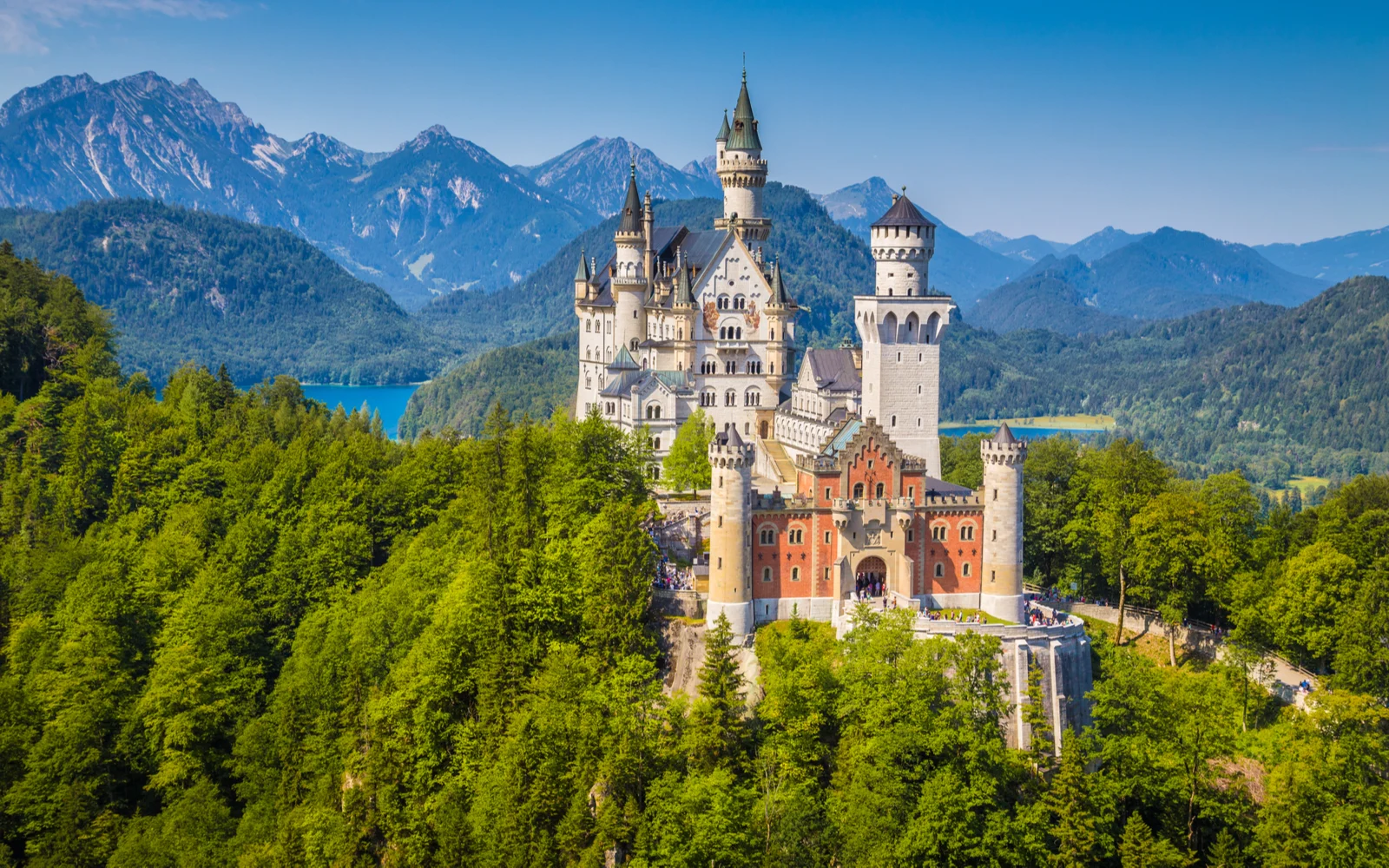Planning a trip to Germany soon and want to know which of the country’s many beautiful castles you should visit? We’re here to help with a list of the best castles in Germany, why we love each one, and things to consider before booking your tickets.
15 Best Castles in Germany in 2025
Germany is the most populous country in western Europe and boasts a long history filled with outstanding art, architecture, and magnificent culture.
Germany is also home to thousands of castles. Castles in Germany are either a Burg, meaning a true castle, or a Schloss, which is closer in meaning to a palace or chateau.
So how do you decide which of these many beautiful palaces and castles to visit? Often, the best castles have a fascinating origin, beautiful architecture, or a unique story that you can’t find anywhere else in the world.
Here is our list of the 15 best castles Germany has to offer. We’ve titled each castle on our list with the castle’s name and the town or region in Germany where it is located.
We’ve also provided an excellent summary and intriguing point of interest for each castle so you can choose which ones you want to visit.
1. Neuschwanstein (Schwangau)
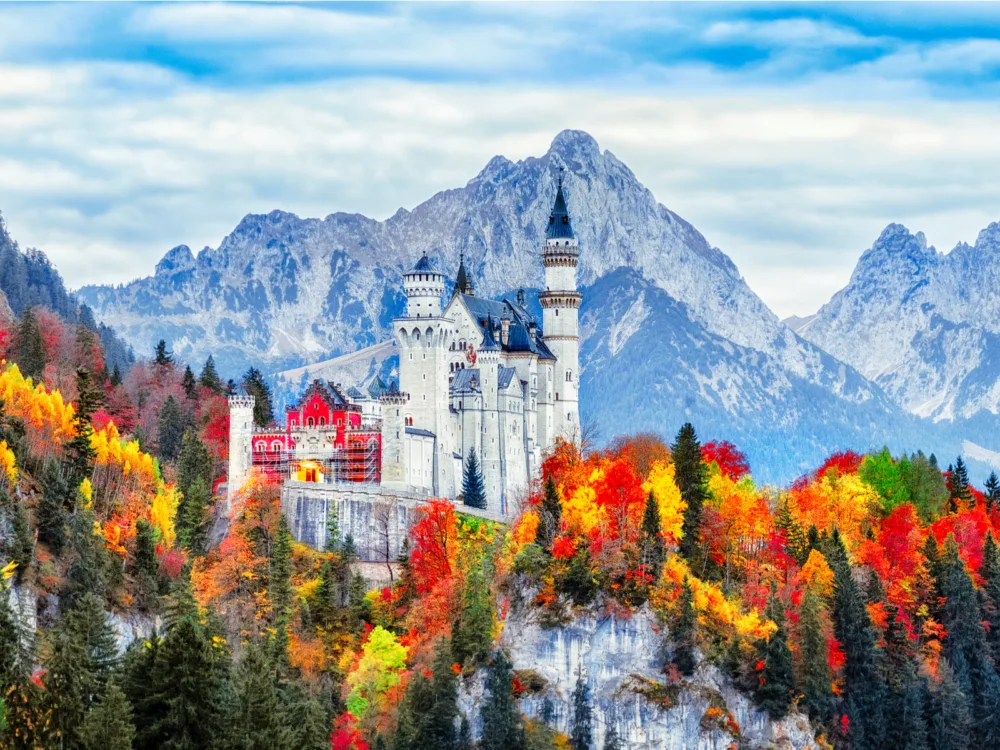
Feel good studio/Shutterstock
The most popular and perhaps the most beautiful castle in all of Germany is the Neuschwanstein castle. It is located in the Bavarian Alps and was built in the 19th century under King Ludwig II.
Castles were no longer necessary as fortifications when Ludwig conceived its design, but the king insisted on its construction.
The Bavarian king wished the castle to be his own decadent hideaway. Only 15 of the planned 200 rooms were constructed before his death. Ironically, it was only a couple of weeks after Ludwig’s death when the castle was open to the public for visitation.
The castle offers a lot for visitors to experience. There is a gatehouse and a multi-leveled courtyard. The lavish interior houses dozens of statues and antiquities.
We advise visitors to reserve their tour several days in advance at this top-rated destination. Tickets for adults are approximately $16, while individuals 18 years and younger get free admission.
Point of Interest: The Neuschwanstein castle was Walt Disney’s inspiration for the castle in Sleeping Beauty and the real-world castle featured at the Magical Kingdom in Walt Disney World.
2. Hohenzollern Castle (Hechingen)
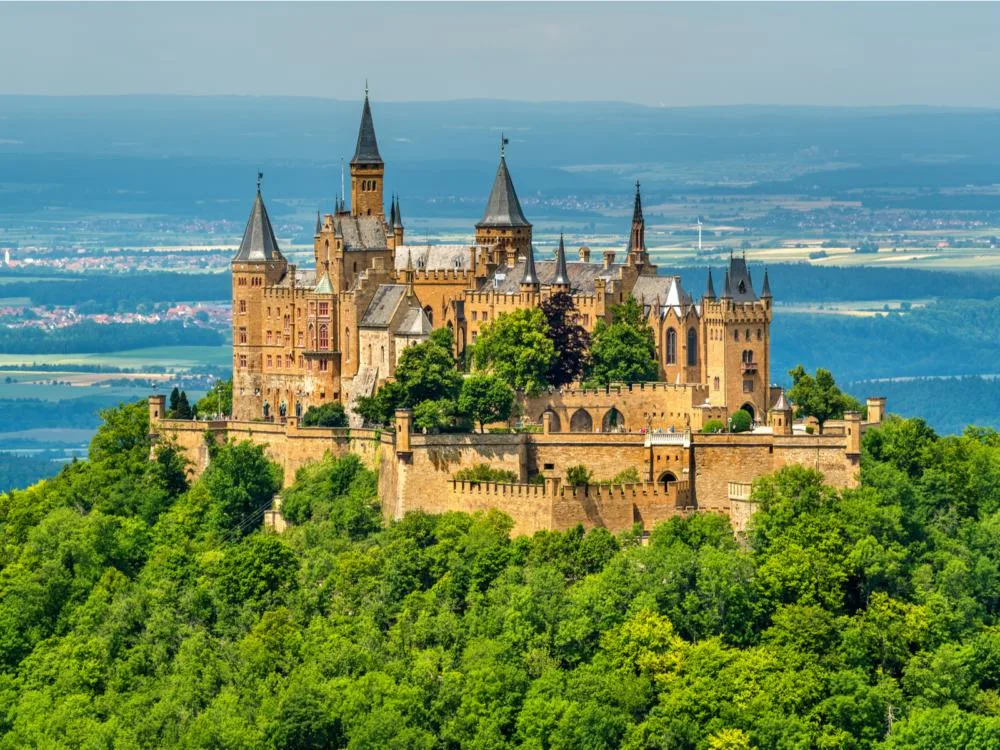
Leonid Andronov/Shutterstock
Built in the 11th century on a steep, round cliff between Lake Constance and the Black Forest is the Hohenzollern Castle.
Built and rebuilt several times over the centuries, Hohenzollern was the ancestral home of Germany’s imperial family, the House of Hohenzollern, who still occupy the castle. This castle is one of the most popular tourist spots in Germany.
Enjoy the many scenic views, the castle’s fascinating architecture, and the dozens of artifacts on display throughout the structure.
Guided tours designed specifically for adults, children, and families are available to give each guest the best experience possible. Admission is around $22 for adults and $10 for children.
Point of Interest: The Hohenzollern holds many artifacts, including the Prussian royal crown, a letter from US President George Washington, and the famous snuff-box that is said to have saved Fredrick the Great’s life.
3. Albrechtsburg (Meissen)
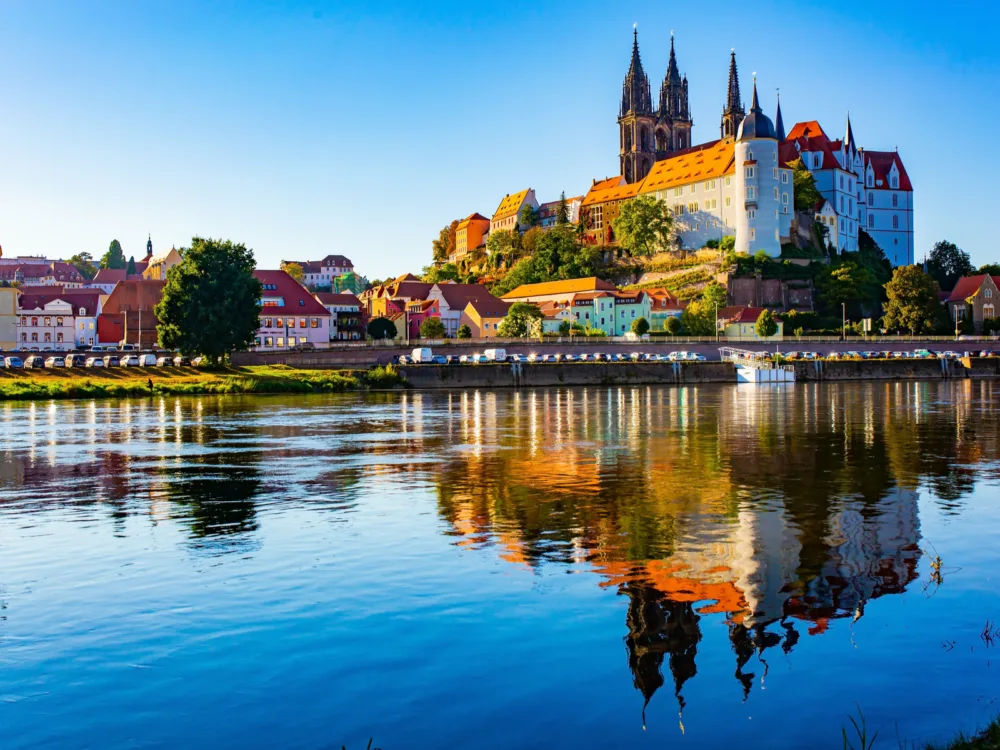
kavram/Shutterstock
The Albrechtsburg in Meissen, Germany, is built in the late-Gothic style and overlooks the picturesque Elbe River valley. It is one of Germany’s oldest castles, and some believe it established many of the trends that later castles would imitate.
Guided tours of the castle lead tourists to explore the surrounding hills and the castle’s courtyard, towers, and even the basements.
View the first porcelain factory in Europe, and adult visitors can also enjoy the end of the tour with a glass of Meissen’s famous and delicious wine.
Come in from the Dresden airport, approximately 18 miles away, and utilize the town’s many options for biking, driving, or public transport by bus and boat.
Admission to the castle is about $10 for adults and $3 for children between 6-16 years old. Children 5 and under get in free.
Point of Interest: Some consider the site of Albrechtsburg to be the first German castle. In 929, King Henry I of Germany built a wooden structure on a rock above the river Elbe and named it Misnia.
4. Lichtenstein Castle (Lichtenstein)
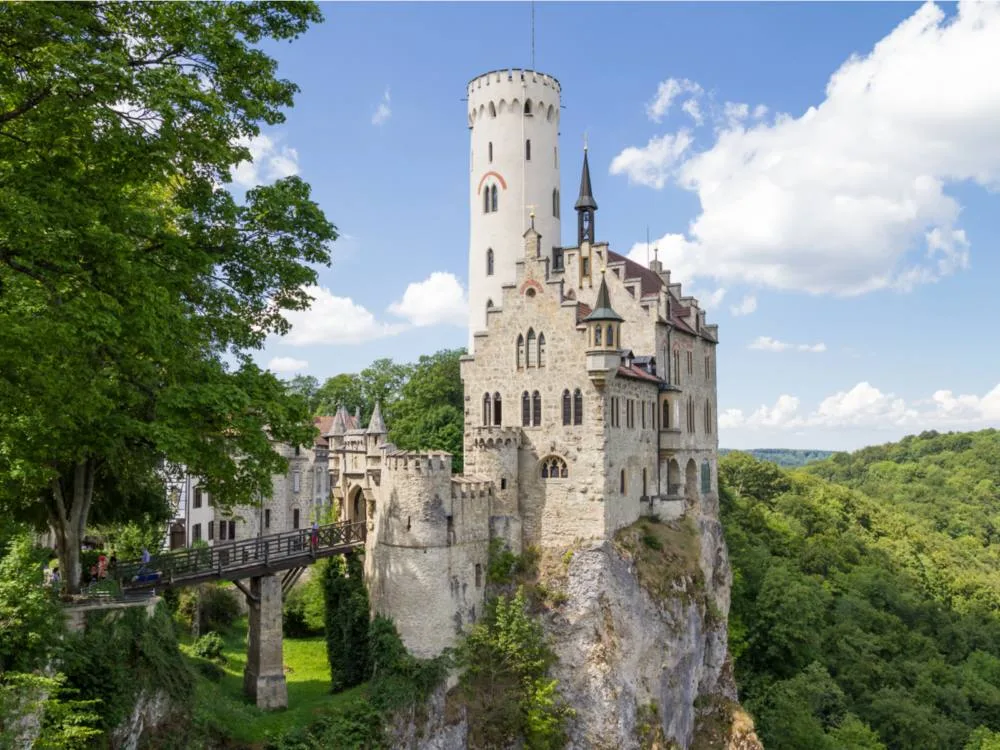
Sasa Komlen/Shutterstock
Designed by Carl Alexander Heideloff and built in Württemberg in 1840, Lichtenstein castle is a Gothic Revival-style castle owned by the Dukes of Urach.
The neo-Gothic architecture is beautiful, and the rolling hills and verdant forest scenery around Lichtenstein have been drawing tourists to the site for centuries.
Ticket prices start at $4 for adults and $2 for children, and 30-minute guided tours of the castle grounds are available Monday through Friday.
Point of Interest: The castle inspired the novel, Lichtenstein by Wilhelm Hauff in 1826, considered the historical beginning of novel writing in Germany.
5. Burg Altena (Altena)
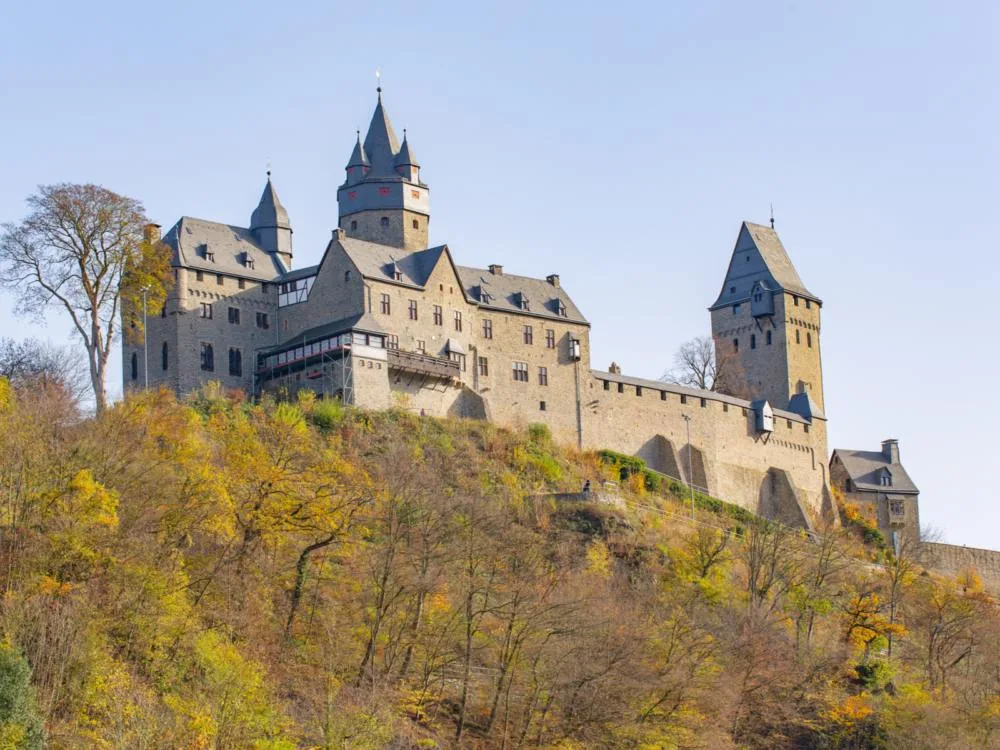
Traveller70/Shutterstock
Built by the Counts of Burg in 1108, the Burg Altena sits atop Mount Wulfseck in Altena, Germany. This medieval castle offers many sights for curious visitors, including historical weapons and arms and a hunting room.
The castle also features two museums, the World Youth Hostels Museum and the Museum of the County of Marck.
Visitors can also explore the surrounding areas, including a riverside walk, the views from the charmingly narrow streets of Altena, and an “Adventure Elevator” that connects to the castle from the center of the town.
Guided tours are available, and prices start at about $6 for adults and $3.50 for children.
Point of Interest: Burg Altena became the first Youth Hostel Association hotel in the world in 1914 and helped establish Europe’s modern hostel system.
6. Heidelberger Schloss (Heidelberger)
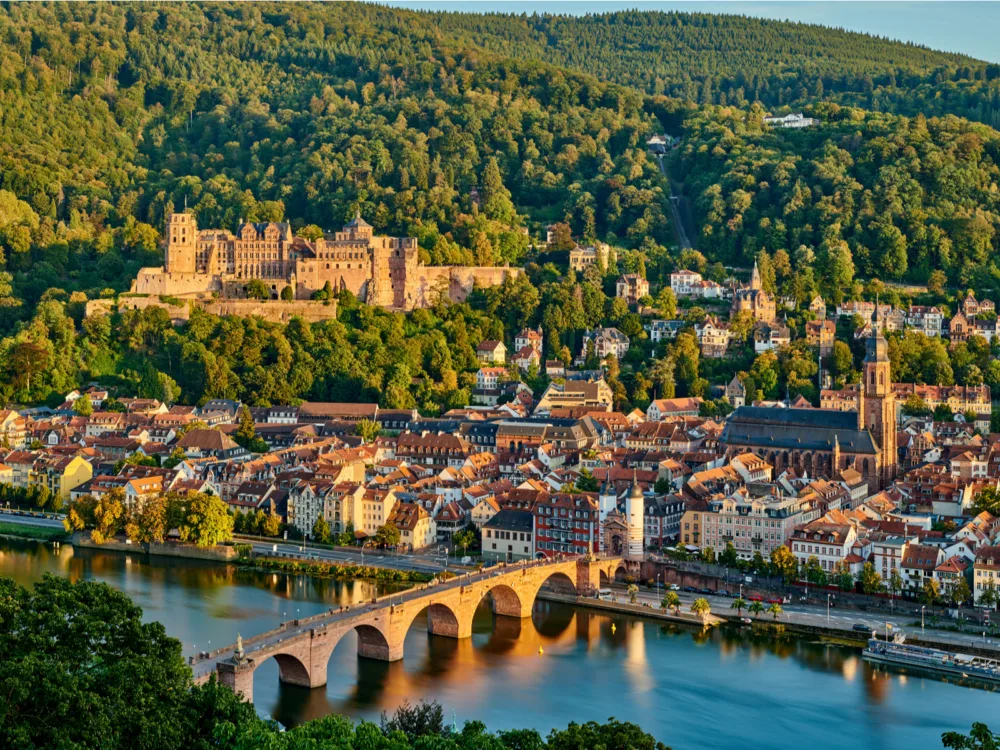
haveseen/Shutterstock
Built on Königstuhl hill, this Gothic castle towers over Nekar Valley. It was initially built in 1196 and became a palace for Holy Roman Emperor Rupert III in 1410. In its heyday, it was considered the most impressive palace of the Renaissance age.
Visitors to the quiet university town can enjoy a beverage in one of the many restaurants or cafes that Heidelberger offers before making their way up the hill to enjoy a guided tour of the castle.
Go there to explore the courtyard’s ruins, view the immense structures of the inner halls, and visit the German Apothecary Museum. Guided tours of the palace start at approximately $6 for adults, and families can visit for about $16.
Point of Interest: The castle houses the world’s largest wine vat, the Heidelberg Tun, built in 1751. The giant wooden barrel measures 23 feet tall, 28 feet wide, and at one point, could hold over 58,000 gallons of wine.
7. Wartburg Castle (Eisenach)
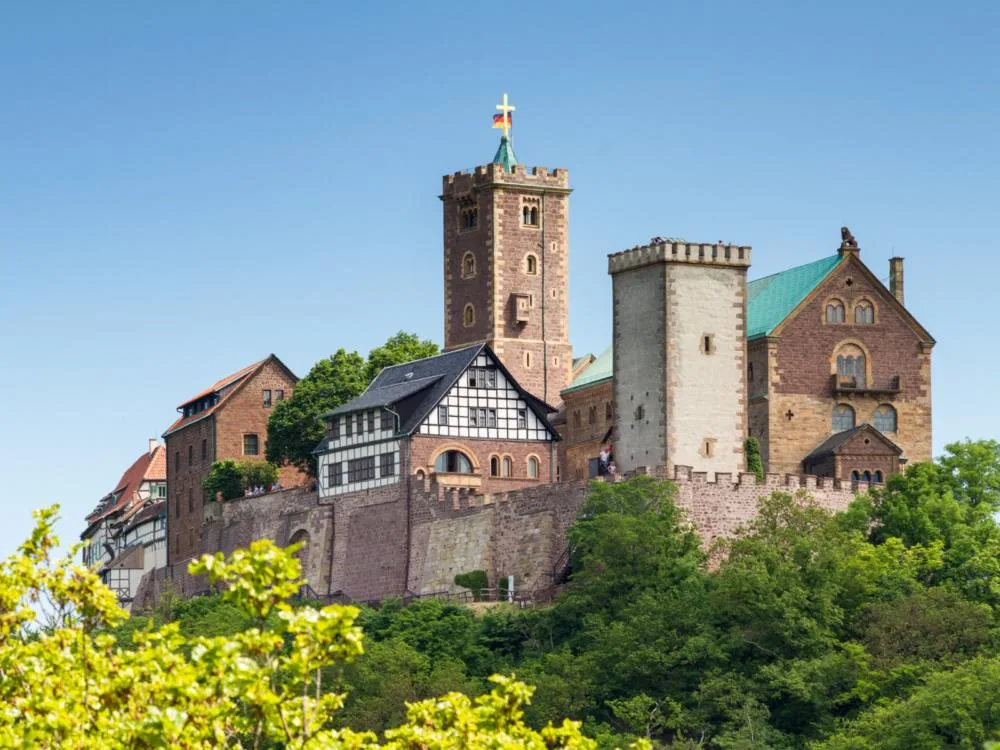
Circumnavigation/Shutterstock
Built in the 12th century, Wartburg castle still features many of its original structures today. Visitors can enter the castle through the medieval drawbridge to explore the many heavily-timbered buildings and thousands of artifacts on display.
Wartburg castle has also been the site of several important historical events for Germany, including hosting Martin Luther for a year during his ex-communication under Pope Leo X.
It was at Wartburg that Luther first translated the Bible’s New Testament into German. The castle offers guided and audio tours with admission prices starting at about $13 for adults and $5 for children.
Point of Interest: In 1999, Wartburg castle became the first German castle labeled a UNESCO World Heritage Site.
8. Cochem Imperial Castle (Cochem)
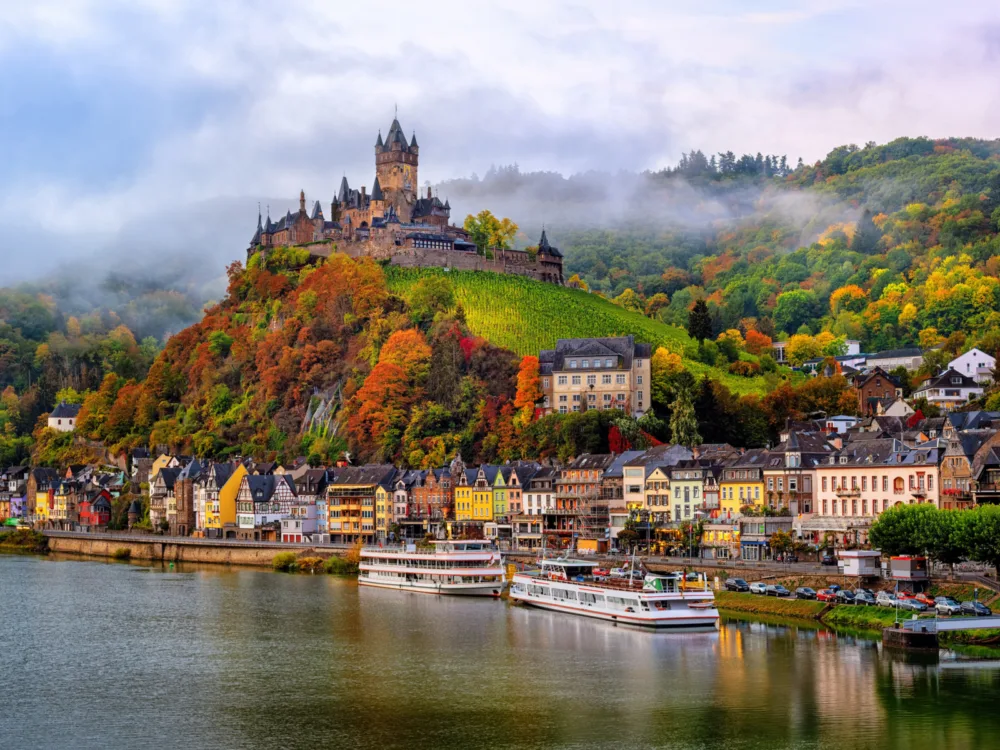
Boris Stroujko/Shutterstock
Also known as the Reichsburg Castle or Reichsburg Cochem, this castle is the crown jewel situated in the center of a quaint medieval town of only 5,000 villagers.
The castle’s tower dates back to 1000 AD, and while much of the castle buildings have been built and rebuilt, much of the original Romanesque architecture remains.
The castle was home to many powerful Queens of Poland and Hungary before gaining official German Imperial status in 1151 under King of Germany Conrad III.
Being one of the biggest castles in Germany, visitors have their choice of several different guided tours, including a ghost tour, a garden landscapes tour, or a night watchman tour.
The castle also hosts many other events and exhibits. Tickets for a 40-minute regular castle tour start at about $7 for adults and $3.50 for children.
Point of Interest: Conrad III, who gave the castle its imperial status, was a descendant of Charlemagne the Great and is considered by many to have been Germany’s first real king.
9. Burg Rheinstein (Trechtingshausen)
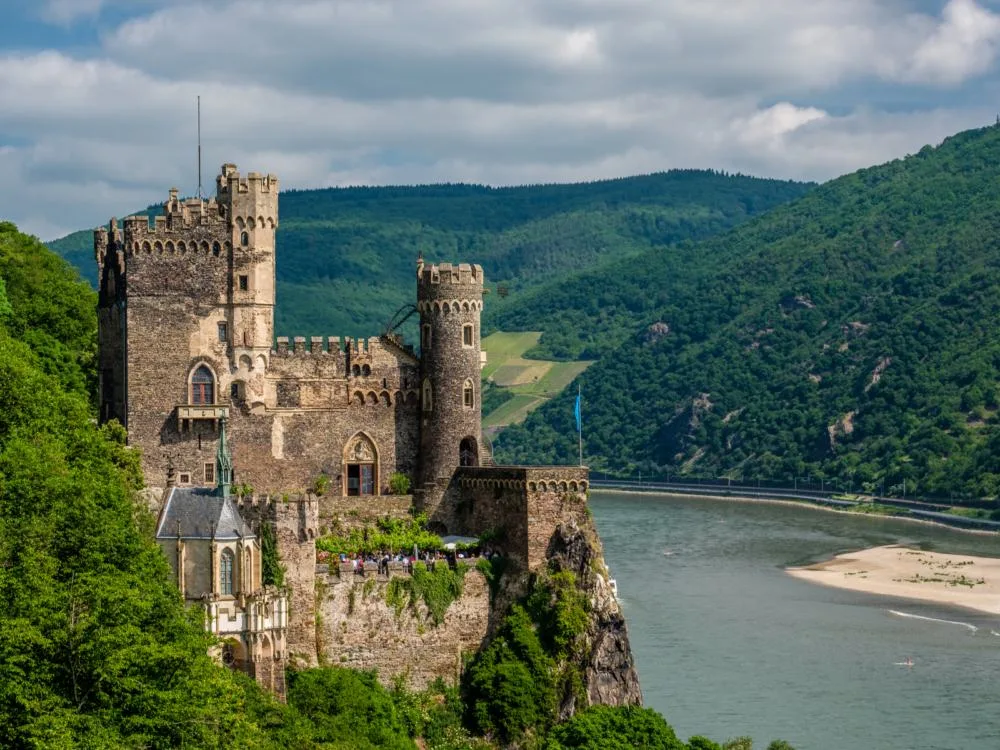
haveseen/Shutterstock
Overlooking the picturesque Rhine river valley, this castle once served as a strategically crucial military structure for Germany.
Today visitors to Burg Rheinstein can enjoy many exciting sights such as the multiple courtyards or the castle’s chapel, which features a carved wood altar depicting Jesus’ Last Supper. Admission is about $7 for adults and $3.50 for children.
Also, consider visiting one of the many nearby castles simultaneously, including Burg Stahleck, Sooneck Castle, and Burg Ehrenfels. A popular choice is to take a day trip by boat along the Rhine, stopping to visit each castle in turn.
Point of Interest: The most famous courtyard at the castle is called the Burgundy Garden, so named for the 500-year-old Burgundy grapevine, which still grows grapes today.
10. Burg zu Burghausen (Burghausen)
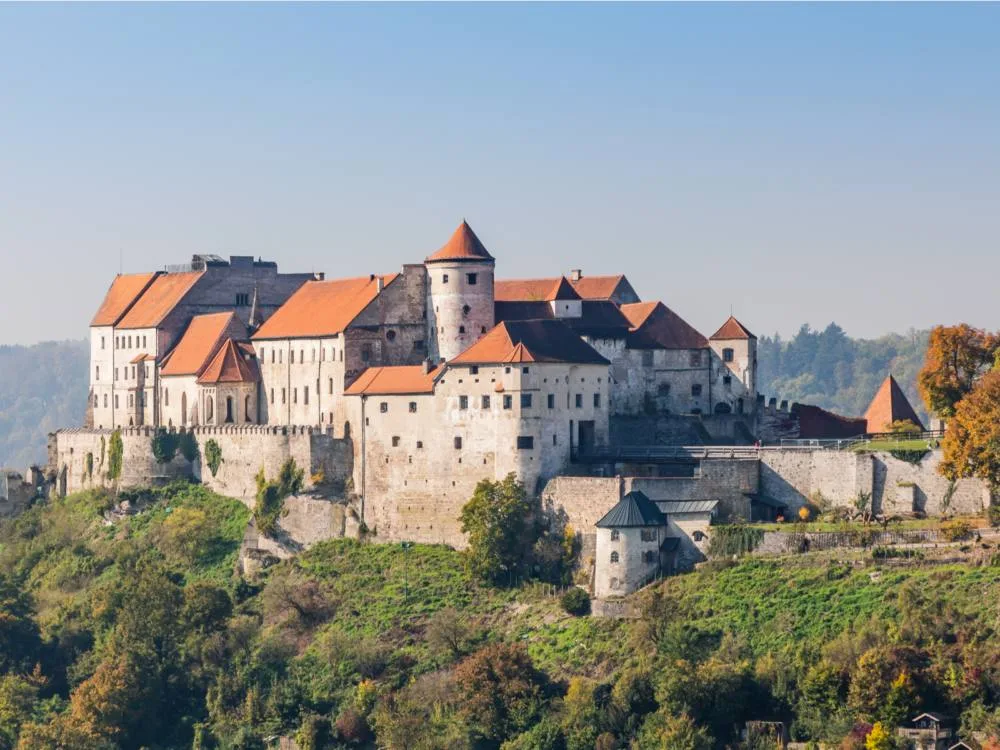
Uwe Aranas/Shutterstock
The sprawling castle grounds of Burghausen castle offer tourists many unique views and intriguing experiences. You can explore the castle proper, an inner courtyard, and a castle museum that features paintings from the Bavarian State Picture Collection.
Burghausen also features five outer courtyards. These courtyards host many activities for visitors, including a working brewery, a bakery, stables, and access to a viewing platform on the castle’s roof.
The castle offers many different themed tours for adults and children. The 90-minute Journey Through Time tour costs only about $9 per participant and is free for children 6 or younger.
Point of Interest: Measuring 1,051 meters long, Burghausen Castle is the longest castle complex in the world, according to Guinness World Records.
11. Hohenschwangau Castle (Schwangau)
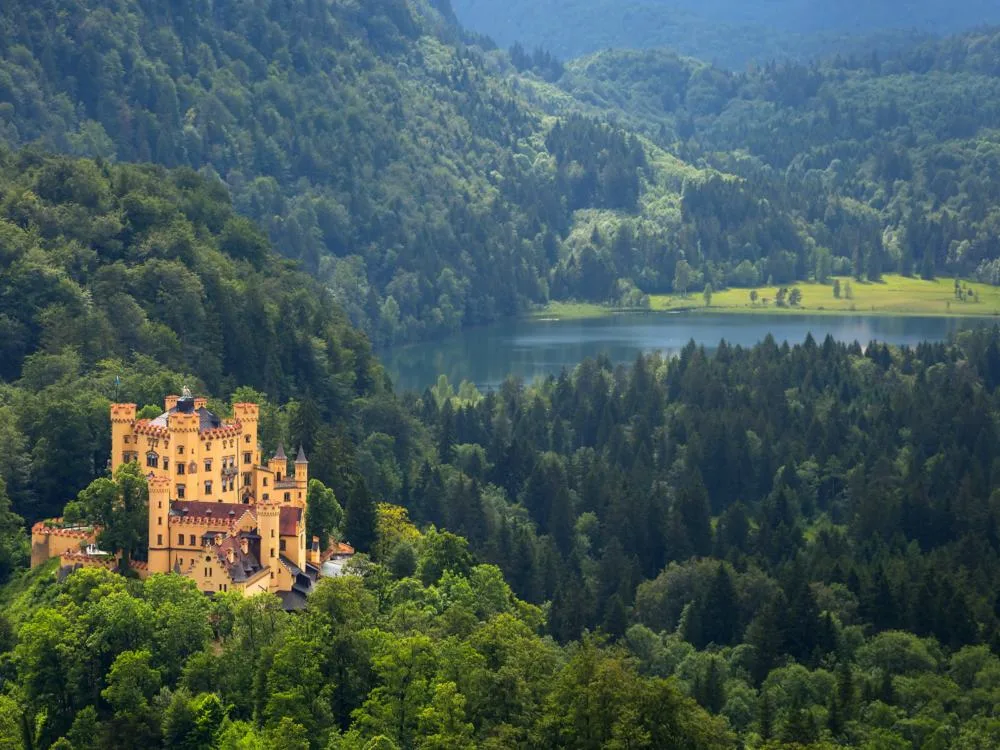
Patryk Kosmider/Shutterstock
Hohenschwangau was the childhood home of King Ludwig II, who built the first castle on our list, Neuschwanstein castle, which is a very close neighbor. Hohenschwangau castle was constructed in the 19th century by Ludwig’s father, the Bavarian King Maximillian II.
The castle is a prime example of Romance Era design, with decadent halls and rooms filled with original Biedermeier furnishings from the 19th century. Other palace attractions include the exterior gates, the ballrooms, and the famous Swan Fountain.
Admission for guided tours starts at around $22 for adults and $11 for children between 7 and 18. Children under 7-years old are admitted free of charge.
Also, consider purchasing a combination ticket to visit the Hohenschwangau and Neuschwanstein castles together, which is only about $34 for adults and $11 for children over 7-years old.
Point of Interest: The walls of Hohenschwangau castle once featured over 100 murals depicting German stories of such legendary figures as the heroes Parsival and Lohengren.
12. Burg Frankenstein (Darmstadt)
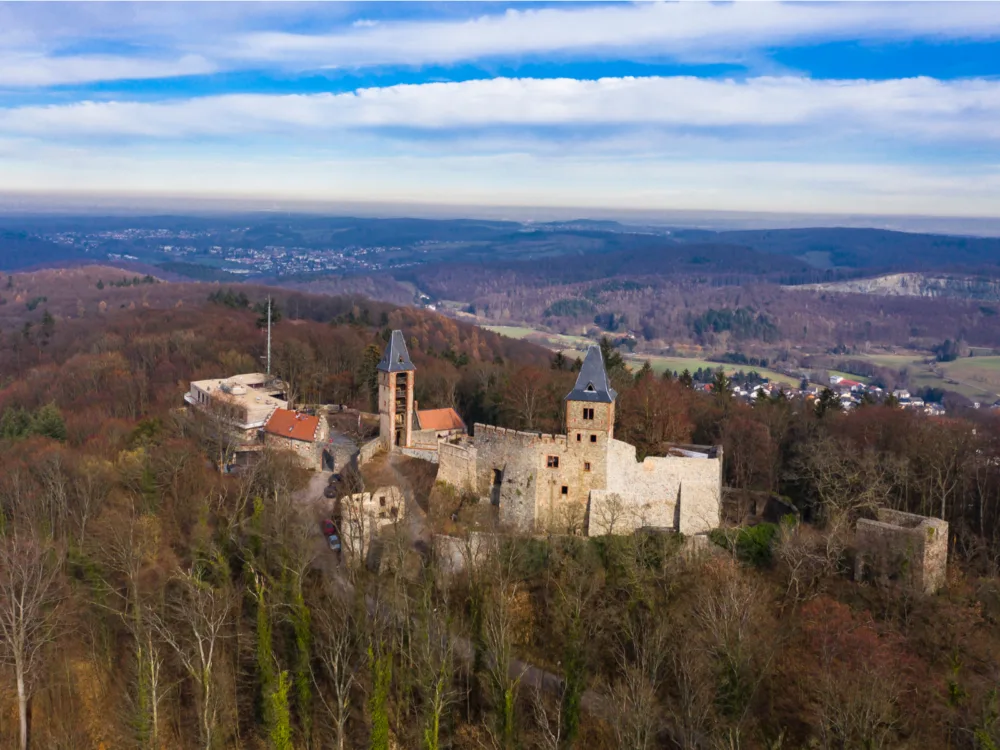
Video Media Studio Europe/Shutterstock
Built for Lord Conrad II Reiz in 1250, the castle now lies in ruins. This castle and the life of its owner, alchemist Johann Conrad Dippel, inspired Mary Shelley to write the classic book Frankenstein, in 1818.
Despite its connection to famous literature, Burg Frankenstein has never officially been converted into a commercial tourist location. However, the site is open to the public, and admission is free for everyone.
Guests can arrange guided tours before arrival. You should also check the castle’s website for information about any special events, such as the annual Halloween festival, which requires a small entry fee.
Point of Interest: Johann Conrad Dippel was born in the castle in 1673 and built a laboratory in the castle to develop animal oils he advertised as being the elixir of life. It is easy to see where Mary Shelley got her inspiration for Dr. Frankenstein.
13. Drachenburg Castle (Königswinter)
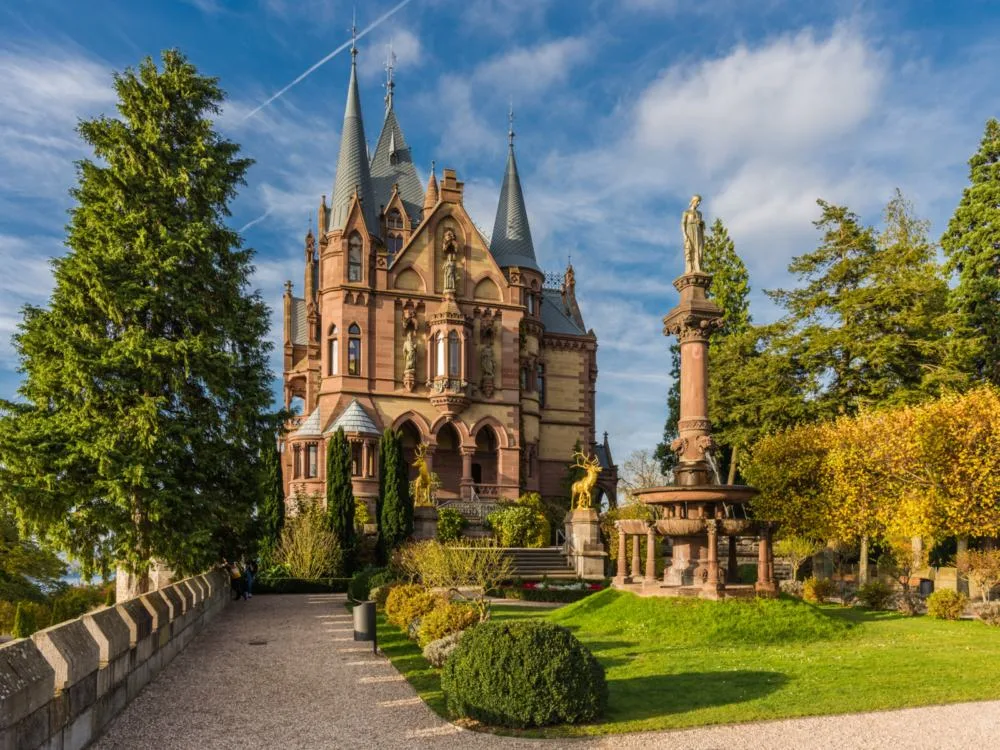
Majonit/Shutterstock
Drachen is the German word for dragon, and the forested hill where Drachenburg castle sits is the supposed place where the legendary Norse hero, Sigurd, slew a dragon while it slept in its cave.
Constructed for a wealthy banker in the 19th century, Drachenburg features a special fairytale charm thanks to its stylized battlements, fanciful spires, and unique square clocktower.
Visitors will also want to take their time on the main staircase, which features a glittering Baroque design and several stained glass windows from the original construction.
Admission tickets are about $7 for adults and $5 for children. Foreign-language guided tours start at approximately $90 and are available for groups of up to 25.
Point of Interest: In 1971, the last owner of the castle, Paul Spinat, installed a fake pipe organ in the music room. The quirky man would regularly host organ concerts, utilizing a hidden tape recorder to impress guests with his fake organ’s music.
14. Landgrafenschloss Marburg (Marburg)
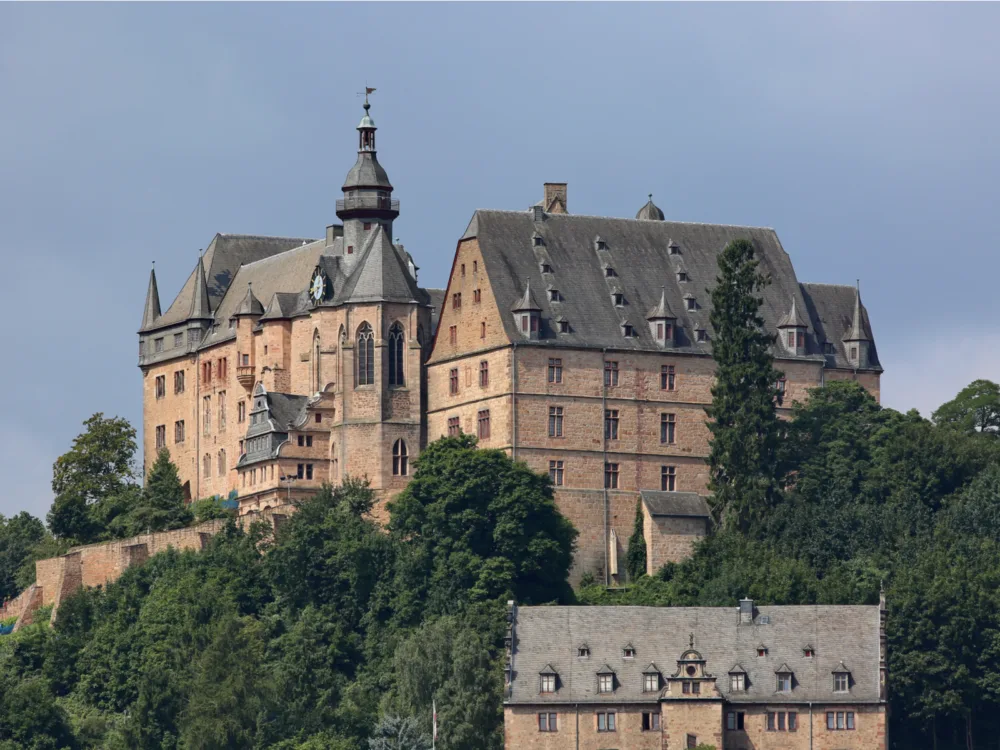
Joerg Lantelme/Shutterstock
Situated in the idyllic town of Marburg, this castle has a history dating as far back as 1000 AD. Built in the 13th century, the castle would later become home to the Landgraves of Hesse until the early 1600s.
Tourists visiting the castle can enjoy the extensive Museum of Art and Cultural History, consisting of five floors of exhibits. The basement is also open to the public, where portions of the fortifications from the 9th and 10th centuries are still viewable.
The castle is closed on Mondays but is otherwise open to the public year-round. Guided walking tours are usually available on weekend days. Prices for the tours vary, and interested parties should contact the castle’s administrative staff to learn more.
Point of Interest: The brothers Jacob and Wilhelm Grimm, authors of the classic Grimms’ Fairy Tales, studied at the university in Marburg and the Marburg castle inspired many of their stories.
15. Charlottenburg Palace (Berlin)
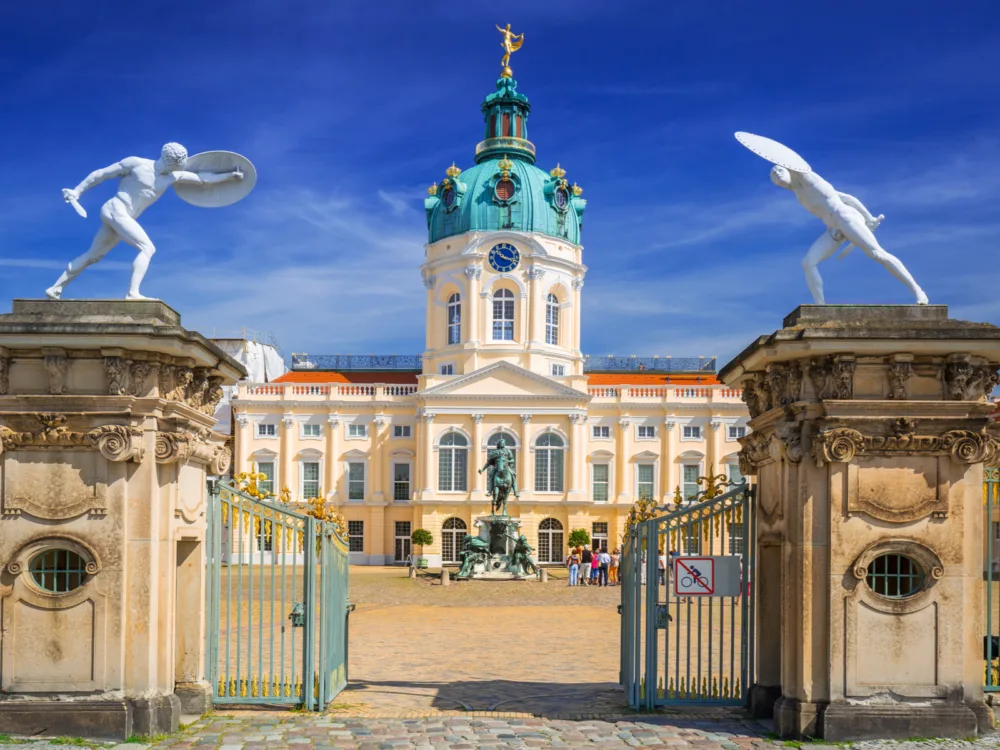
Patryk Kosmider/Shutterstock
Constructed in the 17th century, Charlottenburg Palace remains the largest palace in Berlin. The castle has been home to many notable historical figures, including Frederick the Great and Friedrich Wilhelm II.
Guests can visit several rooms at the palace, including a rococo-style ballroom known as the Golden Gallery, the Silver Vault, where fantastic porcelain, gold, and silver tableware is on display, and the magnificent Charlottenburg Palace Park.
You can purchase tickets for the palace as part of a combination package that provides access to many other locations in the Berlin area. Single tickets start at about $18 for adults, and family tickets are approximately $26.
Point of Interest: The palace was supposed to have a room called the Amber Room, featuring amber-backed panels, gold leaf, and mirrors. Pieces were constructed but later moved to the Berlin Palace. Frederick Wilhelm eventually gifted it to Tsar Peter the Great of Russia in 1716.
Frequently Asked Questions
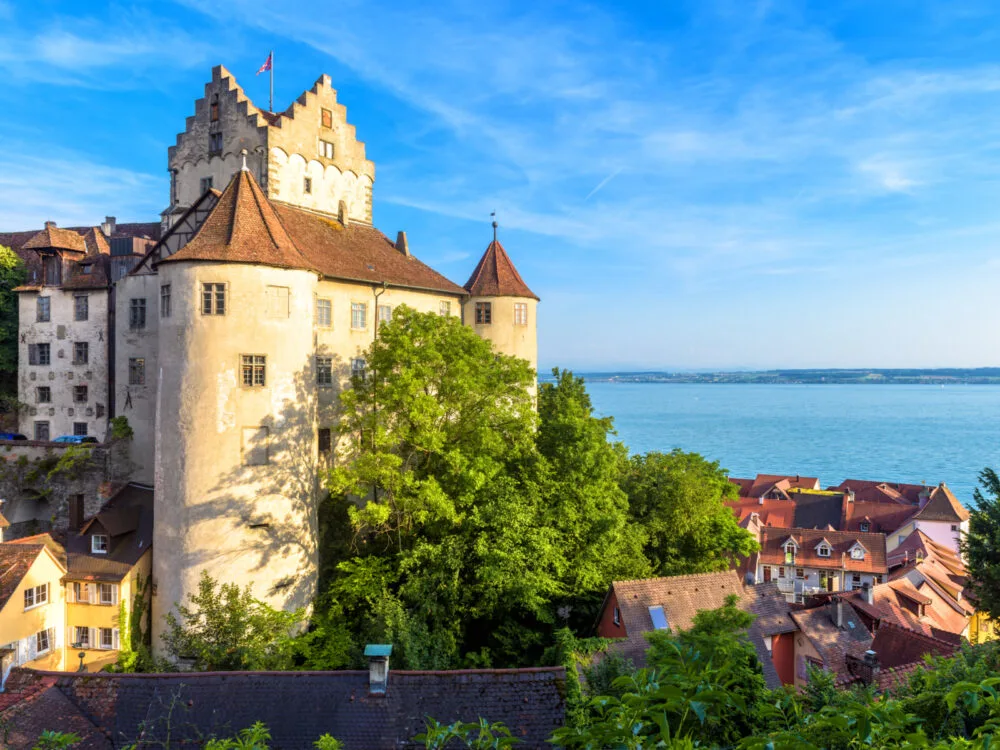
Viacheslav Lopatin/Shutterstock
How many castles are there in Germany?
While no one knows for sure, some experts believe Germany has anywhere between 20,000-25,000 castles. That is more castles than any other country in the world! The European Castle Institute (EBI) started recording Germany’s many castles in 2018, but they don’t expect to complete the list for at least ten years.
Why were so many castles built in Germany?
There is no one specific reason why Germany built so many castles. Historically, Germany has always been a vast country surrounded by foreign neighbors. In the Middle Ages, castles became popular with Germany’s many lords, barons, and feudal kings who needed fortified structures to live in and from which they could defend their lands.
What is Germany’s oldest castle?
The oldest inhabited castle in Germany is Meersburg Castle. It was built in the 7th century for the Merovingian King Dagobert I. Modern visitors to the castle can take a historical tour, including climbing Dabogert’s Tower and visiting the Knights Market.
Can you spend the night in a castle in Germany?
Yes! Many of Germany’s historic castles offer guests the chance to experience a truly unique overnight hotel experience. Unlike modern hotels, staying in a castle hotel can be a quirky experience as no two rooms are likely to be the same. But that is what makes the trip such a special and worthwhile one.
When is the best time to visit Germany and see its castles?
The low season for tourism in Germany falls between November and April. The crowds are significantly smaller, and you will spend much less time waiting in line. Another plus side is that seeing castles such as the Neuschwanstein covered in winter snow is like a scene from a fairytale storybook.
So, What Are the Best Castles in Germany?
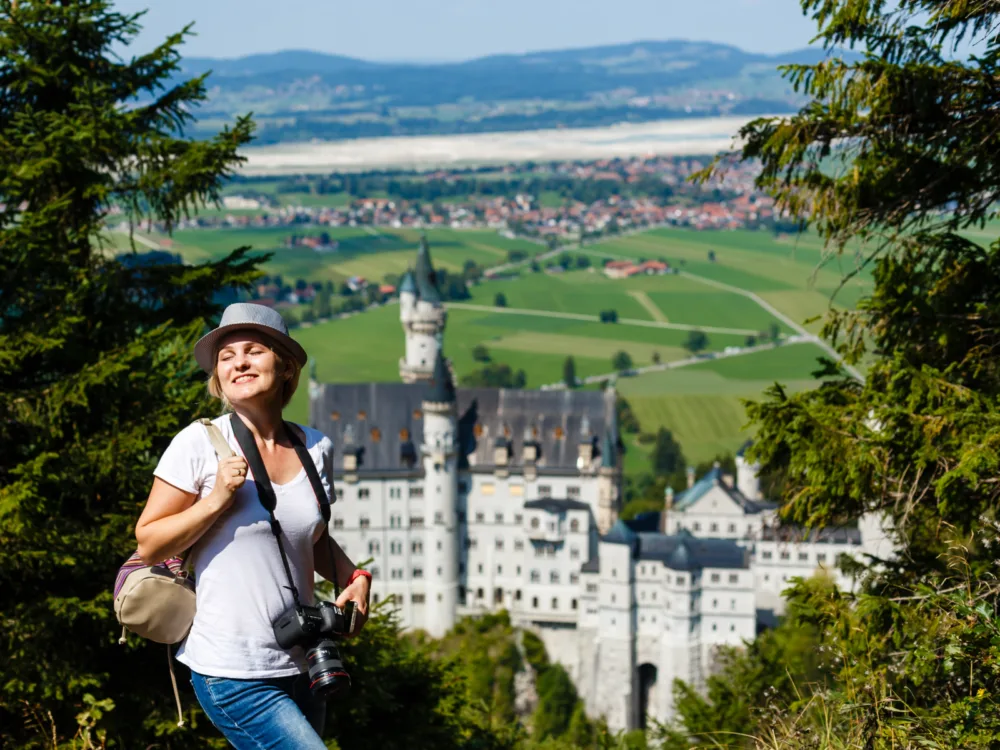
Andrew Angelov/Shutterstock
Germany offers some of the most beautiful and historic castles in the world, and getting to explore them is a unique experience everyone can enjoy.
Every castle on this list, and the many other castles found throughout Germany, offers tourists something different. We suggest taking your time to learn more about each location and its special offerings.
Just remember to plan your trip accordingly. Visit the castle’s website, plan your itinerary, and reserve a tour in advance for the smoothest, most enjoyable experience.
Whether you are interested in history, architecture, or everything else German culture has to offer, there is a castle on our list for you.



